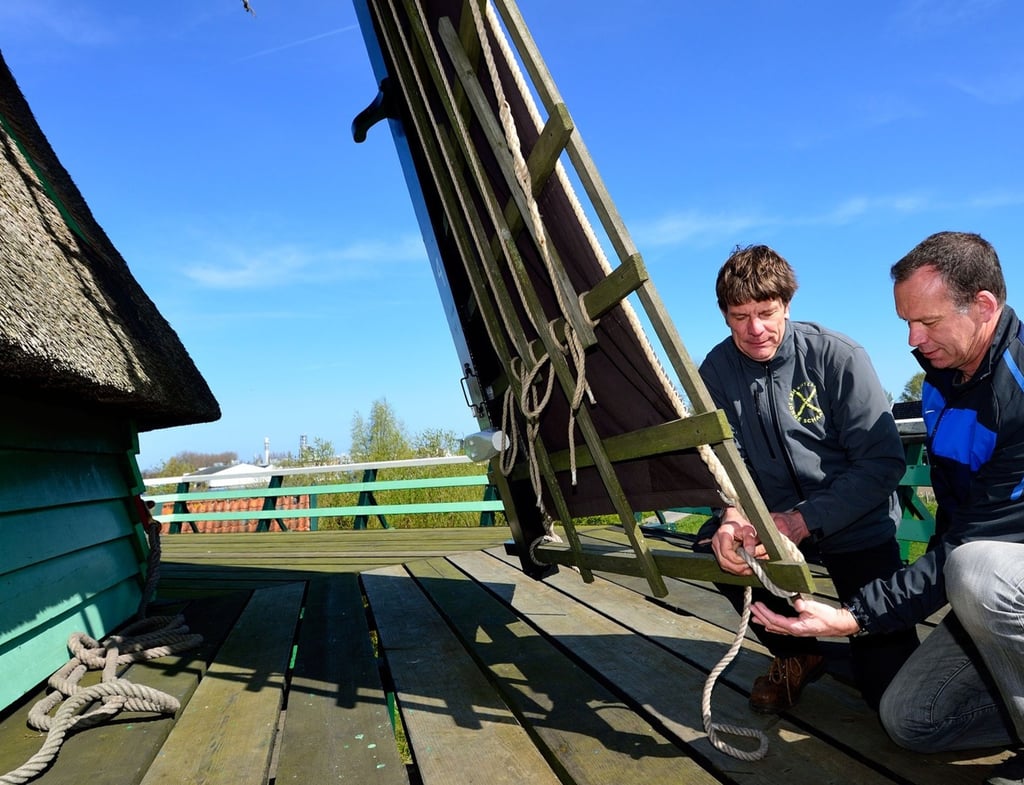The linseed is ground to produce oil for a factory as raw material for oil paints. Just like in the old days.
De Bonte Hen has 330 years of toil and transition behind it. The mill ground linseed until 1926, before the building was partly demolished a decade later and turned into a warehouse.
Today, it is rebuilt and milling again, thanks to a fundraiser in the 1970s, and visitors can gain an insight into a centuries-old craft.
“Our Queen Juliana also donated money and bought the mast for the Dutch national flag,” says van Leeuwen. Just how many guilders the wealthy monarch pitched in remains a secret to this day.
Behind the site’s resurrection was the Zaansche Molen association, founded in 1925 by the Zaandam teacher, painter and windmill enthusiast Frans Mars.

Mars wanted to preserve the old mills on the River Zaan as distinctive monuments in this region north of the Dutch capital, where well over 600 windmills used to work.
“Today, the association looks after 13 listed windmills in Zaandam, as well as in neighbouring Wormer and Westzaan,” says art historian Katelijne Prinsenberg.
She coordinates the volunteers who show visitors round the adjacent mill museum or cut the grass and hedges in its gardens. They also lend a hand to the workers at De Bonte Hen, for example.
“We are not a museum, but a working mill,” volunteer van Leeuwen impresses on visitors.

Meanwhile, mill chief Kreuning gauges the sounds of the grinding mechanism: “As a windmiller, you listen very carefully and know pretty quickly if something is wrong with the wooden gears.”
Everything is running smoothly and he can talk about his own path to the craft. “I was born in a windmill, so I had little choice but to become a windmiller,” says Kreuning, who studied archaeology and biology in Amsterdam, but finally came back to the windmills.
He spent two years as an apprentice at the neighbouring Het Jonge Schaap (the young sheep) sawmill, before passing a specialised exam before a board to receive “the driving licence for windmills”, as he puts it.
This was followed by two years as a young miller before Kreuning took charge of De Bonte Hen in 2023.

Het Jonge Schaap is another working example, but for the production of wood, its voracious saw blades tearing through light-coloured pine trunks.
“We make boards for furniture workshops, carpenters and joiners, but I can’t say how long it takes to saw a log – we depend on the power of the wind,” says Tim Doeves, who has milled on the Zaan river for 16 years.
The sawmill was built in 2007 as a reconstruction of a historic mill based on drawings and computer simulations. This makes it the youngest windmill on the Zaan.
Doeves also guides daily groups of visitors through the sawmill, a stereotypical delight of a Dutchman for the tourists as his wooden shoes, or clogs, clack on the floor.
Some of the milling legacy stems from the trading heyday of the Dutch East India Company in centuries past.

Shipowners and merchants working out of South Africa, Ceylon, India, Persia and Indonesia traded goods with the Baltic states, Norway and the Netherlands, including fabrics. Here too, the windmills of Zaandam made history.
De Schoolmeester (the schoolmaster), built in 1692, stands in the Westzaan district. According to the mill association, it is said to be the last working wind-paper mill in the world.
Here, windmiller Ron Botterman duplicates the process of turning cotton waste into the thick pulp traditionally used to make heavy paper for stylish invitations and certificates.
But one particular end-product stands out above all others in the annals of the local milling industry.
The United States Constitution, the world’s longest surviving written charter of government, written in 1787 and in operation since 1789, is believed to be written on paper from a Zaandam mill.







